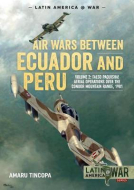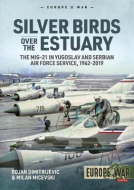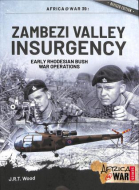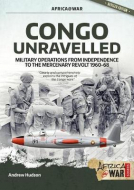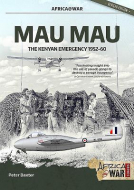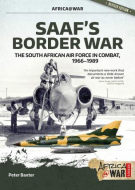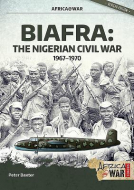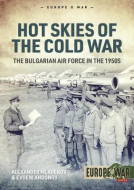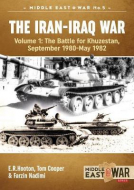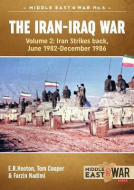
- Agriculture
- Architecture & Design
- Arts & Photography
- Biography
- Business
- Calendars and Diaries
- Childrens (All)
- Childrens (Illustrated)
- Childrens (Picture flats)
- Childrens (Te Reo)
- Classics
- Cooking, Food & Drink
- Craft & Hobbies
- Design (Art / Graphics)
- Design (Interiors)
- Education
- Fashion
- Fiction & Literature
- Fiction - Young Adult
- Gift Ideas
- Health & Wellbeing
- History
- Home & Garden
- Humour & Gift
- Instead of a Card Poems
- Military
- Music
- New Zealand
- NZ (History)
- NZ (Landscapes)
- NZ (Pictorial)
- Poetry
- Reference
- Religion & Faith
- Science & Nature
- Sport & Recreation
- Stationery
- Taschen : 40th Anniversary Edition
- Taschen : BA Basic Art
- Taschen : BU Bibliotheca Universalis
- Te Reo Māori
- Transport
- Travel
History (457)
|
Air Wars Between Ecuador and Peru: Volume 2 (Latin America@War 17)
ISBN: 9781913118709 Author: Amaru Tincopa Publisher: Helion & Company Based on diverse interpretations of the Real Ceduls (Royal Proclamations) by the Spanish monarchs of earlier centuries, the almost 200-year-old border dispute b... Based on diverse interpretations of the Real Ceduls (Royal Proclamations) by the Spanish monarchs of earlier centuries, the almost 200-year-old border dispute between Ecuador and Peru became one of the longest-running international armed conflicts in the Western hemisphere. Numerous attempts at a negotiated definition of the borders failed, and the two countries fought at least three wars in the 20th Century. Drawing upon extensive research in the official archives of the Fuerza Aérea del Peru (FAP), and documentation from multiple private sources in Ecuador and Peru, The Air Wars between Ecuador and Peru, Volume 2 reconstructs the history of the air forces of both nations, and the little-known story of their brief, yet bitter clashes of early 1981. Thanks to the availability of precise details from both parties to the conflict, the volume avoids the usual, biased and one-sided coverage of the conflict, while providing intricate details of the military build-up, capabilities and intentions of both air forces involved, their training, planning, and the conduct of combat operations. Illustrated by more than 100 exclusive photographs, half a dozen maps and 15 authentic color profiles, Air Wars between Ecuador and Peru, Volume 2 provides the first authoritative account of the air warfare between Ecuador and Peru in early 1981. Bind: paperback Pages: 72 Dimensions: 210 x 291 mm Publication Date: 13-05-2020 |
$49.99 |
|
|
Silver Birds Over the Estuary (Europe@War 6)
ISBN: 9781913118693 Authors: Bojan Dimitrijevic, Milan Micevski Publisher: Helion & Company The Mikoyan i Gurevich MiG-21 has been built in greater numbers than any other combat aircraft since 1945. It also saw service with more air forces than any oth... The Mikoyan i Gurevich MiG-21 has been built in greater numbers than any other combat aircraft since 1945. It also saw service with more air forces than any other type manufactured over the last 70 years. Locally designated the 'L' (for Lovac or fighter), for more than half a century over 260 MiG-21s in 12 different versions and sub-variants formed the backbone of the Yugoslav Air Force and Air Defense Force (JRV i PVO) and later the Serbian Air Force (RV i PVO). Entering service at the peak of the Cold War, the MiG-21 quickly replaced the US-supplied North American F-86E and F-86D Sabres in the Yugoslav inventory. The first version, MiG-21F-13, was followed by the MiG-21PFM in 1967, and MiG-21M/MF in 1970. Serving with the 204th Fighter Regiment, the task of these fighters was the air defense of Belgrade, capital of Yugoslavia. Bind: paperback Pages: 80 Dimensions: 210 x 291 mm |
$49.99 |
|
|
Zambezi Valley Insurgency (Africa@War 39)
ISBN: 9781912866854 Author: Dr J.R.T Wood Publisher: Helion & Company Across Africa in the post-1956 era, the aspirations of African nationalists to secure power were boosted and quickly realized by the British, French and Belgian... Across Africa in the post-1956 era, the aspirations of African nationalists to secure power were boosted and quickly realized by the British, French and Belgian hasty retreat from empire. The Portuguese, Southern Rhodesian and South African governments, however, stood firm and would be challenged by their African nationalists. Influenced by the Communist bloc, these nationalists adopted the 'Armed Struggle'. In the case of Rhodesia, the Zimbabwe African People's Union (ZAPU), led by Joshua Nkomo, took this step in 1962 after their effort to foment rebellion in Rhodesia's urban areas in 1961-62 had been frustrated by police action and stiffened security legislation. Rhodesia's small, undermanned security forces, however, remained wary as Zambia and Tanganyika had given sanctuary to communist- supplied ZAPU and Zimbabwe African National Union (ZANU) guerrillas. The Rhodesians had foreseen that the northeastern frontier with Mozambique would be the most vulnerable to incursions because the African population living along it offered an immediate target for succour and subversion. The Portuguese were not seen as a bulwark as they were clearly making little progress in their counter-insurgency effort against their FRELIMO nationalist opponents. The Rhodesians were fortunate, however, that ZAPU and ZANU chose to probe across the Zambezi River from Zambia into the harsh, sparsely populated bush of the Zambezi Valley. The consequence was that the Rhodesian security forces conducted a number of successful operations in the period 1966-1972 which dented insurgent ambitions. This book describes and examines the first phase of the 'bush war' during which the Rhodesian forces honed their individual and joint skills, emerging as a formidable albeit lean fighting force. Bind: paperback Pages: 80 Dimensions: 210 x 297 mm Publication Date: 07-11-2019 |
$55.00 |
|
|
Congo Unravelled (Africa@War 40)
ISBN: 9781912866861 Author: Andrew Hudson Publisher: Helion & Company Post-independence events in the Republic of the Congo are a veritable Gordian knot. The ambitions of Congolese political leaders, Cold War rivalry, Pan- African... Post-independence events in the Republic of the Congo are a veritable Gordian knot. The ambitions of Congolese political leaders, Cold War rivalry, Pan- Africanism, Belgium's continued economic interests in the country's mineral wealth, and the strategic perceptions of other southern African states all conspired to wrack Africa's second largest country with uprisings, rebellions and military interventions for almost a decade. Congo Unravelled solves the intractable complexity of this violent period by dispassionately outlining the sequence of political and military events that took place in the troubled country. The reader is systematically taken through the first military attempts to stabilize the country after independence and the two distinguishing military campaigns of the decade - the United Nations military operations (Opération des Nations Unies au Congo, or ONUC) to end the secession of the Katanga Province, and the Dragon Operations led by Belgian paratroopers, supported by the US Air Force, launched to end the insurgency in the east of the country - are chronicled in detail. Finally, the mercenary revolt - an event that tainted the reputation of the modern mercenary in Africa - is described. Lesser known military events - Irish UN forces cut off from the outside world by Katangese gendarmes and mercenaries, and a combined military operation in which Belgian paratroopers were dropped from US Air Force C-130 Hercules aircraft and supported by a mercenary ground force to achieve humanitarian ends - go far toward resolving the enigma surrounding post-independence Congo. Bind: paperback Pages: 72 Dimensions: 210 x 297 mm Publication Date: 07-11-2019 |
$49.99 |
|
|
Mau Mau (Africa@War 41)
ISBN: 9781912866878 Author: Peter Baxter Publisher: Helion & Company The Second World War forever altered the complexion of the British Empire. From Cyprus to Malaya, from Borneo to Suez, the dominoes began to fall within a decad... The Second World War forever altered the complexion of the British Empire. From Cyprus to Malaya, from Borneo to Suez, the dominoes began to fall within a decade of peace in Europe. Africa in the late 1940s and 1950s was energized by the grant of independence to India, and the emergence of a credible indigenous intellectual and political caste that was poised to inherit control from the waning European imperial powers. The British on the whole managed to disengage from Africa with a minimum of ill feeling and violence, conceding power in the Gold Coast, Nigeria and Sierra Leone under an orderly constitutional process, and engaging only in the suppression of civil disturbances in Nyasaland and Northern Rhodesia as the practicalities of a political handover were negotiated. In Kenya, however, matters were different. A vociferous local settler lobby had accrued significant economic and political authority under a local legislature, coupled with the fact that much familial pressure could be brought to bear in Whitehall by British settlers of wealth and influence, most of whom were utterly irreconciled to the notion of any kind of political handover. Mau Mau was less than a liberation movement, but much more than a mere civil disturbance. Its historic importance is based primarily on the fact that the Mau Mau campaign was one of the first violent confrontations in sub-Saharan Africa to take place over the question of the self-determination of the masses. It also epitomized the quandary suffered by the white settler communities of Africa who had been promised utopia in an earlier century, only to be confronted in a post-war world by the completely unexpected reality of black political aspiration. This book journeys through the birth of British East Africa as a settled territory of the Empire, and the inevitable politics of confrontation that emerged from the unequal distribution of resources and power. It covers the emergence and growth of Mau Mau, and the strategies applied by the British to confront and nullify what was in reality a tactically inexpert, but nonetheless powerfully symbolic black expression of political violence. That Mau Mau set the tone for Kenyan independence somewhat blurred the clean line of victory and defeat. The revolt was suppressed and peace restored, but events in the colony were nevertheless swept along by the greater movement of Africa toward independences, resulting in the eventual establishment of majority rule in Kenya in 1964. Bind: paperback Pages: 56 Dimensions: 210 x 297 mm Publication Date: 30-11-2019 |
$49.99 |
|
|
SAAFs Border War (Africa@War 43)
ISBN: 9781912866885 Author: Peter Baxter Publisher: Helion & Company South African Mirages and Cuban MiG-21s dogfighting over Cuito Cuanavale, the largest tank battle on African soil since El Alamein; Puma troopships shot out of ... South African Mirages and Cuban MiG-21s dogfighting over Cuito Cuanavale, the largest tank battle on African soil since El Alamein; Puma troopships shot out of the skies by Strela missiles and RPG-7 rockets; Alouette III gunships hovering menacingly above Koevoet tracker-combat teams as they close in for the kill; Hercules and Transall transports disgorging their loads of Parabats over Cassinga; suicidal helicopter hot-extractions of Recce operators deep in enemy territory; and a lone Alouette pilot who disobeyed orders and under intense ground fire evacuated a critically wounded soldier ... such is the story of the South African Air Force, the SAAF, over the 23-year period 1966-1989, the period of conflict that became known as the 'Border War'. Set against the backdrop of the Cold War, the SAAF was effectively South Africa's first line of defence against Soviet expansionism in southern Africa. That the Soviets, through their surrogates - the Cuban military, Angola's FAPLA and Namibia's SWAPO - sought a communist regime in South Africa is indisputable, as too was the SAAF's skill, quality, determination and capability to defeat the best Soviet air defences of the time. This account covers all the major operations that the SAAF was involved in, from Operation Blouwildebees, the opening salvo of the conflict at Omgulumbashe, South West Africa in 1966 to the final curtain, Operation Merlyn, the so-called April Fool's Day 'war' of 1989 when the SAAF and Koevoet, almost alone, frustrated SWAPO's last throw of the dice with its illegal invasion of South West Africa. In this account, highlighting such operations as Reindeer, Bootlace/Uric, Sceptic, Protea, Daisy, Askari, Moduler, Hooper and Packer, among many, as well as the ongoing methodological operations like Lunar, Maanskyn, Donkermaan and Butterfly, Baxter examines and brings to life the squadrons and aviators that fought in both counter-insurgency and conventional warfare roles. Besides an extensive selection of rare photographs, the book features a comprehensive section on camouflage and markings and 11 pages of colour aircraft profiles and insignia by noted SAAF authority William Marshall, making this title especially useful for modelers. Bind: paperback Pages: 72 Dimensions: 210 x 297 mm Publication Date: 30-11-2019 |
$49.99 |
|
|
Biafra (Africa@War 45)
ISBN: 9781912866892 Author: Peter Baxter Publisher: Helion & Company Nigeria was a unique concept in the formation of modern Africa. It began life as a highly lucrative if climatically challenging holding of the Royal Niger Compa... Nigeria was a unique concept in the formation of modern Africa. It began life as a highly lucrative if climatically challenging holding of the Royal Niger Company, a British Chartered Company under the control of Victorian capitalist Sir George Taubman Goldie. It was handed over to indigenous rule in 1960 with the best of intentions and a profound hope on the part of the British Crown that it would become the poster child of successful political transition in Africa. It did not. One of the signature failures of imperial strategists at the turn of the 19th century was to take little if any account of the traditional demographics of the territories and societies that were subdivided, and often joined together, into spheres of foreign influence, later evolving into colonies, and finally into nation states. Many of the signature crises in post-colonial Africa have owed their origins to this very phenomenon: incompatible and mutually antagonistic tribal and ethnic groupings forced to cohabit within the indivisible precincts of political geography. Congo, Rwanda/Burundi, Sudan and many others have suffered ongoing attrition within their borders as historic enmities surge and boil in restless and ongoing violence. Such was the case with Nigeria in the post-independence period. The traditions and practices of the Islamic north and the Christian/Animist south, and even within the multiplicity of ethnic division in the south itself, proved to be impossible to reconcile. The result was an immediate centrifuge away from the centre, complicated by the vast infusion of oil revenues and the inevitable explosion of corruption that followed. All of this created the alchemy of civil war and genocide, which erupted into violence in 1967 as the eastern region of Nigeria attempted to secede. The war that followed shocked the conscience of the world, and revealed for the first time the true depth of incompatibility of the four partners in the Nigerian federation. This book traces the early history of Nigeria from inception to civil war, and the complex events that defined the conflict in Biafra, revealing how and why this awful event played out, and the scars that it has since left on the psyche of the disunited federation that has continued to exist in the aftermath. Bind: paperback Pages: 72 Dimensions: 210 x 297 mm Publication Date: 31-12-2019 |
$49.99 |
|
|
Hot Skies of the Cold War (Europe@War 2)
ISBN: 9781912866915 Author: Alexander Mladenov Publisher: Helion & Company After the end of the Second World War, Bulgaria fell in total dependency upon the Soviet Union as a direct result of the 1944 Yalta agreement on the 'spheres of... After the end of the Second World War, Bulgaria fell in total dependency upon the Soviet Union as a direct result of the 1944 Yalta agreement on the 'spheres of influence' division of Europe. The Bulgarian Air Force was radically reformed in the Soviet style and rapidly re-equipped with huge numbers of front-line aircraft. The strengthening of the Bulgarian air arm became a high priority as the Cold War in the Balkans gathered speed, and small incidents near the southern and western borders of the country began to occur with increasing frequency. The extensive 'Sovietisation' of the Bulgarian air arm led to the eventual change of its official title in late 1949, becoming identical to its Soviet counterpart, the Voennovazdushni Sily (VVS), featuring a structure identical to that of a Soviet front-line air army. In April 1951, the Bulgarian Air Force entered the jet era with the delivery of the first batch of Yak-23 fighters, followed not after long by the MiG-15. Bind: paperback Pages: 96 Dimensions: 210 x 297 mm Publication Date: 10-02-2020 |
$55.00 |
|
|
The Iran-Iraq War Volume 1 (Middle East@War 23)
ISBN: 9781913118525 Author: E R Hooton Publisher: Helion & Company The Iran-Iraq War was one of the bloodiest conflicts of the 20th century and accidentally created the current nightmare of Islamic fundamentalist terrorism. The... The Iran-Iraq War was one of the bloodiest conflicts of the 20th century and accidentally created the current nightmare of Islamic fundamentalist terrorism. There have been many books on the conflict, but this is the first detailed military history using materials from both sides, as well as materials obtained from US intelligence circles and British governmental archives. It provides a unique insight into a war which began through miscalculation and rapidly escalated into the longest conventional conflict in the post-Second World War era. The first volume looks at the background and describes in detail how Saddam Hussein decided to invade, but hamstrung, the Iraqi Army to restrict its greatest success to a narrow strip of territory in Iran's southern province of Khuzestan. This left the Iraqis unable to either advance or withdraw, and exposed them to ever greater and more successful Iranian counter-strokes which drove them out in May 1982 in the ferocious Battle of Khorramshahr. Bind: paperback Pages: 88 Dimensions: 210 x 297 mm Publication Date: 15-11-2019 |
$55.00 |
|
|
The Iran-Iraq War Volume 2 (Middle East@War 24)
ISBN: 9781913118532 Author: E R Hooton Publisher: Helion & Company Volume 2 takes up the account after Iraq withdrew from Khuzestan and is based upon material from both sides, from US Intelligence data, British Government docum... Volume 2 takes up the account after Iraq withdrew from Khuzestan and is based upon material from both sides, from US Intelligence data, British Government documents and secret Iraqi files. Iraq's withdrawal exposed the great southern city of Basra to Iranian attack but it was shielded by fortifications based upon a huge anti-tank ditch, the so-called Fish Lake, which the Iranians tried to storm in the summer of 1982. This bloody failure left Tehran in a position where prestige prevented a withdrawal into Iran but the armed forces lacked the resources to bring the conflict to a favorable conclusion. During the next four years the Iranians tried to outflank the Fish Lake defenses initially through the marshes in the north and finally through an attack on the Fao Peninsula which increased national prestige but was a strategic failure and paved the way for Iraq's massive victories in 1988. This followed a series of successful defensive battles in which the Iranians were driven back with great loss. This account describes the battles in greater detail than before and, by examining them, provides unique insights and ends many of the myths which are repeated in many other accounts of this conflict. Bind: paperback Pages: 112 Dimensions: 210 x 297 mm |
$55.00 |


